On a Sunday afternoon, sitting peacefully, enjoying a tasty beverage, it’s quiet enough to hear the distant chirping of some birds or the hum of electrical devices from other rooms. In a library reading room, perhaps footsteps padding down a carpeted aisle can be heard, or that particular frictional sliding-popping sound a finger and thumb make as they ensure that one page (not two) is being turned.
In some rooms, designed to eliminate practically all external noise, it’s quiet enough to hear your own heartbeat. In each case, the ambient noise drops so that the observer can no longer register it, and normally unheard sounds stand out. How do you measure that kind of quiet… especially when that quiet falls below a microphone’s capabilities?
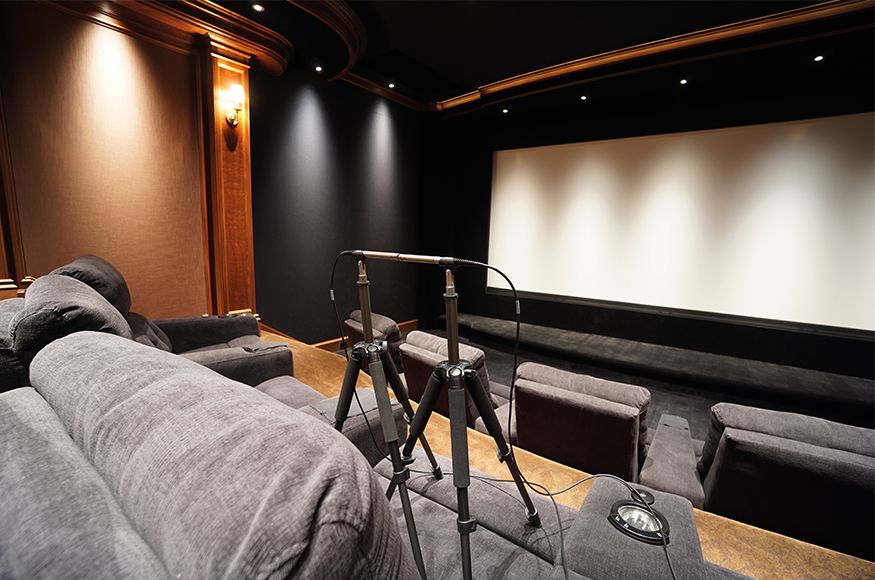
Function drives requirements
Anechoic chambers, like the one in Microsoft’s building 87 (Waves 5, 2016), isolate a room from outside noise and prevent reflected noise, eliminating ambient noise to ensure that only the target noise is measured and that the data is not corrupted by itself via reflected noise. These rooms are absorptive. They create a free-field environment, but in an enclosed space. This is the ideal environment for pinpointing noise sources that need to be mitigated.
Other rooms, like cinemas, theatres and performance halls, are designed to handle sound differently – to ensure that the audience hears a sound in a particular way. The Hahn theatre (Waves 8, 2017), built by KYD, is a primary example of ensuring that the audience hears the movies’ intended effects. Through acoustic treatments, some frequencies are reinforced and others attenuated or eliminated. Ensuring that the right sound reaches the audience requires that there is no interference between the treatments and the listeners.This means that outside noise must be eliminated or mitigated.
Is there a distinction when measuring the ambient noise of the rooms? In both cases, external noise must be eliminated to ensure absolute silence, or come as close to it as possible. According to Vince Rey of Brüel & Kjær, while the purpose of the rooms is vastly different, the measurement method required to ensure their intended functions was not.
Due to cognitive disassociation, many people become uncomfortable (to the point of distress and disorientation) in anechoic chambers because the visual and audial input do not match. While the parents of newborns may find the overwhelming silence pleasant, most people don’t
Vince opined that both the Microsoft Building 87 and Hahn theatre measurement requirements were similar in the sense that the noise floor of even a low-noise microphone could not guarantee good measurements. This was obvious at Microsoft and there was a risk at the Hahn theatre. The coherent power measurement was the only solution to eliminate thermal noise from the measurements.
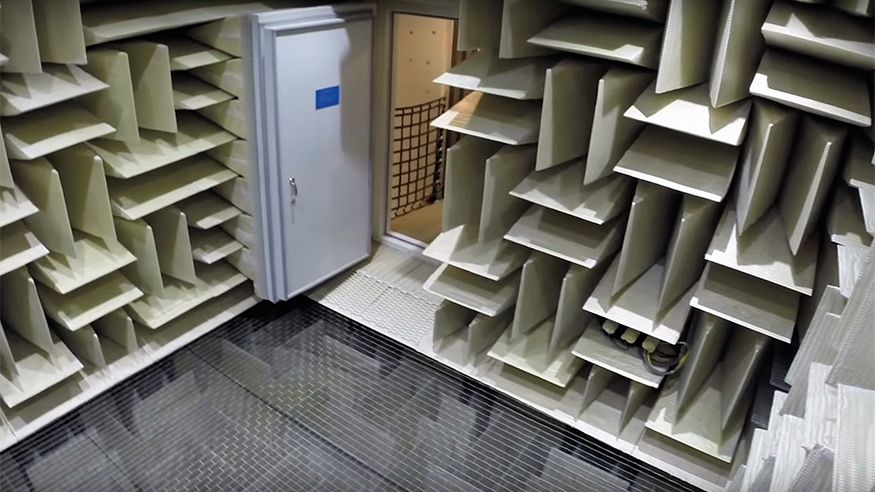
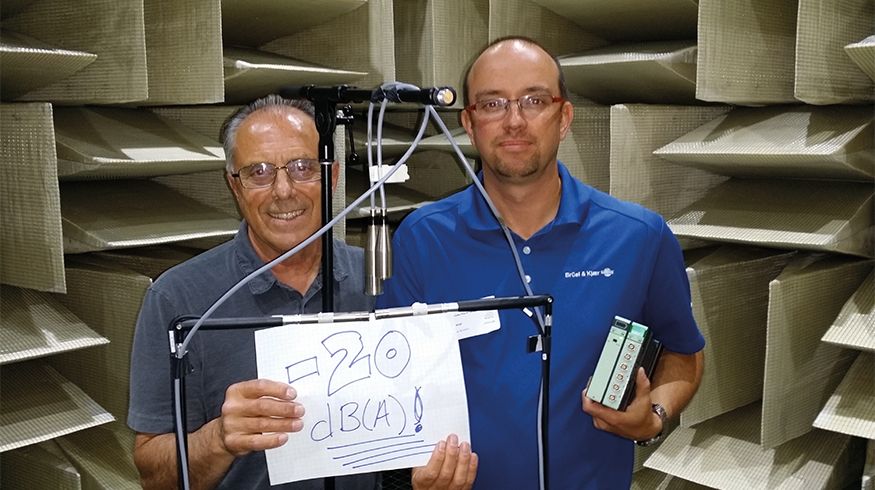
Measuring beyond the limits
Building 87’s anechoic chamber and the Hahn theatre both had the same problem: how do you measure below the limits of the microphone? The answer for both: the two-microphone coherent power method. This method uses two low-noise microphones to, essentially, subtract each other’s noise from the measurement. The principle behind the coherent power method lies in taking advantage of multiple channels simultaneously measuring the exact same phenomena. If the distance between the two microphone sensing elements is small enough, they can be considered to be simultaneously exposed to the exact same pressure variation. Concurrently, the system is also exposed to its own noise (random electrical disturbance).
Coherent power integration works with complex-valued data. The integration of the part of signals that are correlated between multiple channels will see a constructive addition of signal. The part of signals that is uncorrelated will result in cancellation over time. This means that the room noise (correlated signals) will integrate over time to its true amplitude value, while the system noise (uncorrelated signals) will integrate toward zero over time.
The goal is to is correlate sound pressure between channels and exclude the system noise. So, if the same variation occurs at the same time for the two microphones that variation is considered pressure variation, and if a variation is not seen simultaneously for both microphones, it is considered system noise.
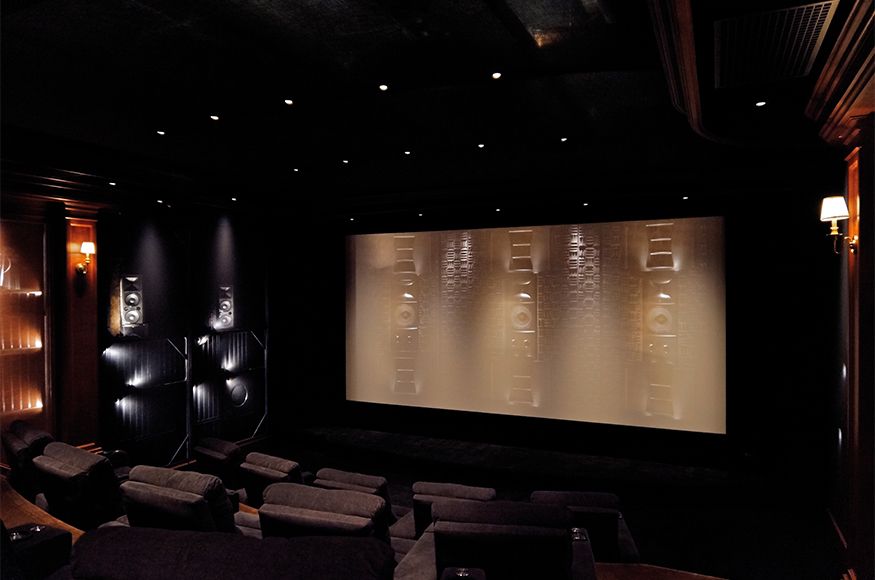
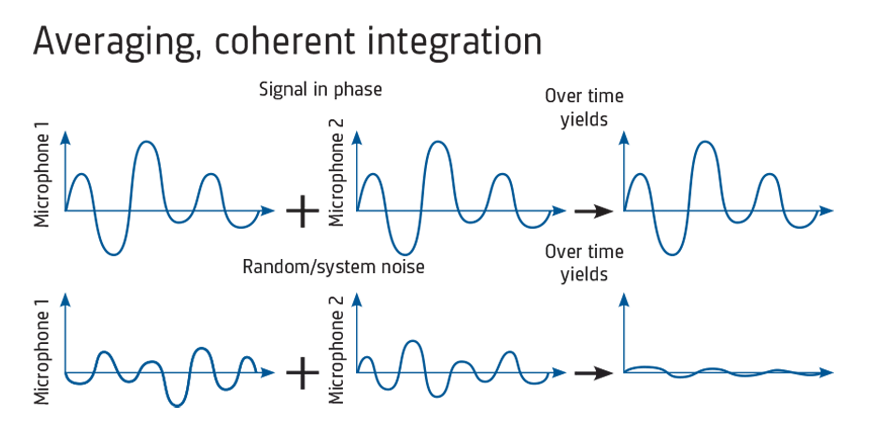
NVH makes an appearance?
SONOSCOUT VAS
The Hahn theatre presented some particular problems. The room is not absorptive, so any noise originating inside the room, even a heartbeat or the simple act of breathing, would corrupt the measurement. Also, part of the room’s isolation is a 180 kg (400 lb) door that seals tightly in its frame. There was no way to pass a wire into the room and close the door, so the measurement needed to be remotely controlled. Because the measurement needed remotely controlled time recordings, Sonoscout™, a versatile, wireless NVH tool that didn’t require any additional training, was perfect for controlling the measurement. Once the data was acquired, it was remotely processed by Vince Rey (who assisted with both the building 87 and Hahn theatre measurements) for 1/3-octave coherent power analysis in PULSE™ LabShop.
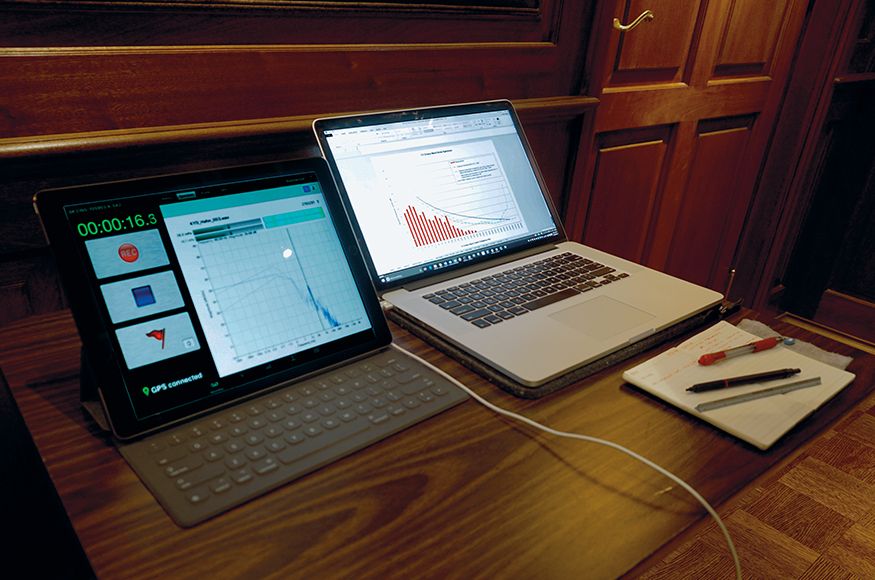
The results are in
The ability of an engineer to confirm the predicted values for any design is essential. With the two-microphone coherent power method, engineers can confirm that the data is valid for target values at or below a microphone’s lower limit. Both of the presented cases exceeded the microphone’s limit, which was – 5 dB(A). Additionally, the tools used in the Hahn theatre measurement enabled valid data by working around specific conditions, like a massive door that must be closed. The ability to provide an accurate evaluation of a purpose-built room is necessary for ensuring valid results for that room’s intended purpose: ensuring silence to ensure the right sound.
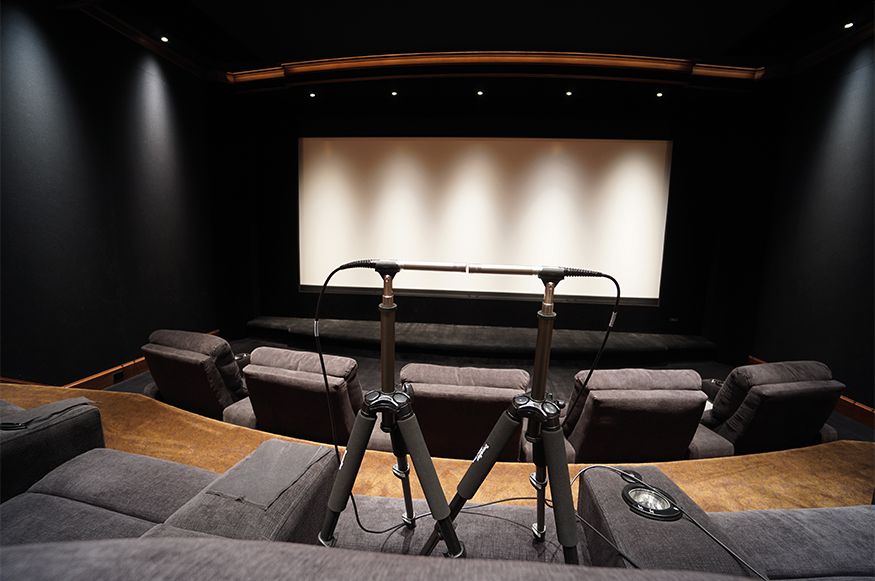
According to Andrew Steele, lead acoustic engineer for KYD, the combination of tools made setup and measurement painless. The minimal wiring needed with LAN-XI and the ability to connect wirelessly and control the measurement from another room with Sonoscout enabled him to acquire the data quickly and easily
Related WAVES Articles
- The screaming void: An hour in an anechoic chamber
- The quietest place in the world
- Working together for the greater quiet

Suscríbase a nuestro boletín informativo y recibirá las últimas noticias de B&K sobre sonido y vibración

